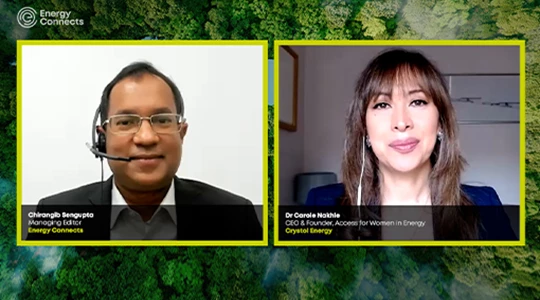Exploring the potential impacts of Generative AI on the energy industry
Digital innovation is playing an increasingly important role in helping the energy industry address challenges related to energy security, energy affordability, and environmental sustainability. In its 2022 Digitalisation report, the International Energy Agency states that digitalisation across the energy sector could help to cut costs, improve efficiencies and resilience, and reduce emissions. And now, with the emergence of generative artificial intelligence, the industry can increase and accelerate these efforts.
Artificial intelligence (AI) applied through machine learning (ML) will be one of the most transformational technologies of our generation, tackling some of humanity’s most challenging problems. We are seeing the next wave of widespread ML adoption, with the opportunity for every customer experience and application to be reinvented with generative AI.
While it’s still too early to define the impact that generative AI will have on the energy industry, this transformative technology could play a pivotal role in helping to increase operational efficiencies, reduce health and safety exposure, enhance the customer experience, minimize emissions associated with energy production, and accelerate the energy transition. For the energy industry, generative AI-based systems could initially serve as chat or natural-language interfaces that complement existing ML- and AI-based systems.

In these early stages, there are a few specific industry uses that could benefit from generative AI. Knowledge management and data access, for example, is a long-standing industry challenge. Data sets are often decades old and reside in various formats and siloed storage systems. If this data was ingested and integrated into a generative AI-based solution augmented by an index, employees could use natural language prompts to more quickly retrieve stored internal knowledge, helping to decrease decision-making time.
Generative AI models could also be used for reservoir modelling by generating synthetic reservoir models that simulate reservoir behaviour. General adversarial networks (GANs) are a popular generative AI technique that could be used to generate synthetic reservoir models. The generator network of the GAN is trained to produce synthetic reservoir models that are similar to real-world reservoirs, while the discriminator network is trained to distinguish between real and synthetic reservoir models. Once the generative model is trained, it could be used to generate a large number of synthetic reservoir models that could be used for reservoir simulation and optimisation, reducing uncertainty and improving hydrocarbon production forecasting. These reservoir models could also be used for energy applications where subsurface understanding is critical, such as geothermal, carbon capture and storage (CCS), and wind farm development.
For more than two decades, Amazon has invested heavily in the development and deployment of AI and ML, including customer-facing services like the recommendation engines that personalise the shopping experience on Amazon.com and internal operations like the AI-powered robots that optimize order fulfilment in warehouses. And now Amazon Web Services (AWS) will help drive the adoption of generative AI across the energy industry by making it easy, practical, and cost-effective for energy organisations to leverage it across their businesses. AWS is focused on democratising the use of generative AI by providing customers and partners with the flexibility to choose both the way they want to build cost-efficient infrastructure as well as the correct security controls to help simplify deployment.
KEEPING THE ENERGY INDUSTRY CONNECTED
Subscribe to our newsletter and get the best of Energy Connects directly to your inbox each week.
By subscribing, you agree to the processing of your personal data by dmg events as described in the Privacy Policy.

CSIS: long-term LNG demand to reshape global export capacity growth

More women in energy vital to the industry’s success

India’s energy sector presents lucrative opportunities for global companies

Oil India charts the course to ambitious energy growth

Maritime sector is stepping up to the challenges of decarbonisation
Partner content

Navigating the trading seas: exploring the significance of benchmarks

Back to the Future(s): the best commodities benchmarks are still physically settled

Ebara Elliott Energy offers a range of products for a sustainable energy economy

Essar outlines how its CBM contribution is bolstering for India’s energy landscape

































